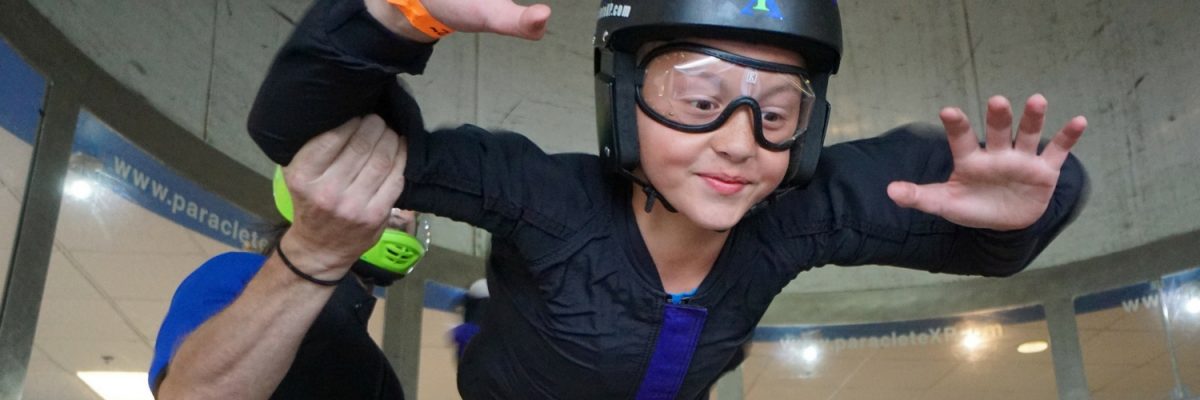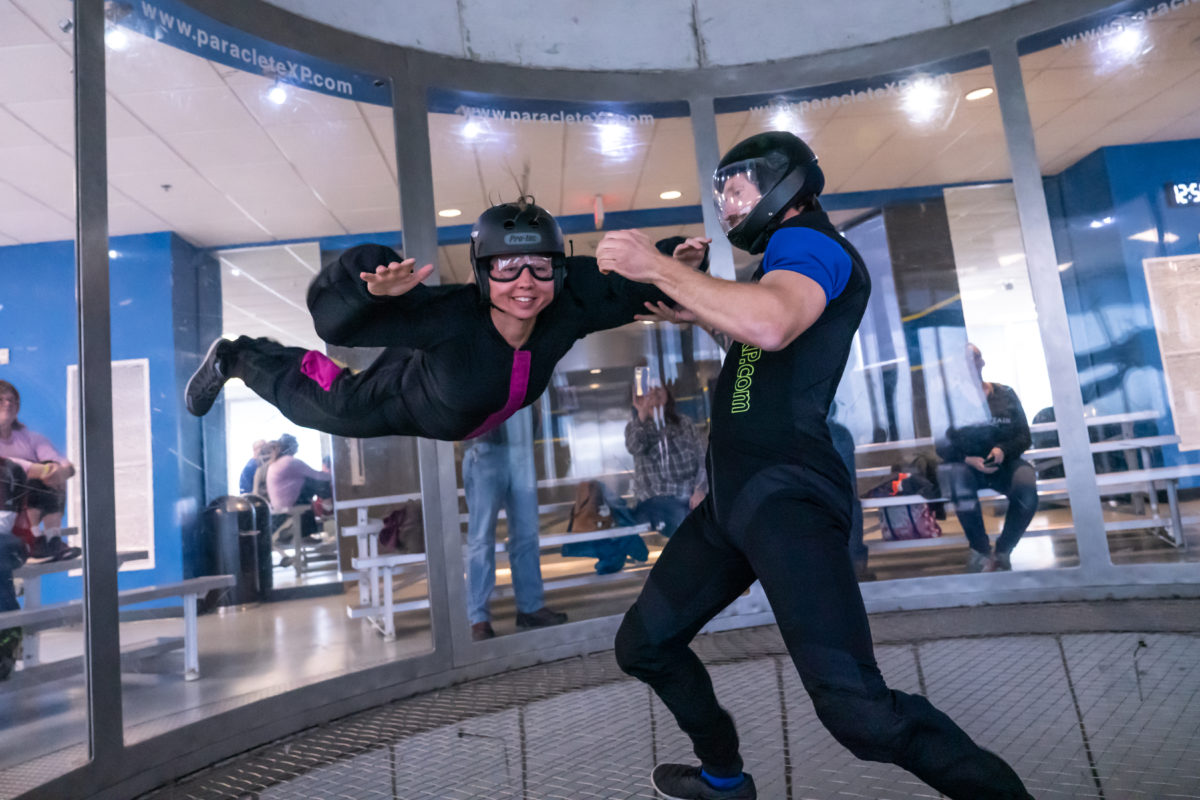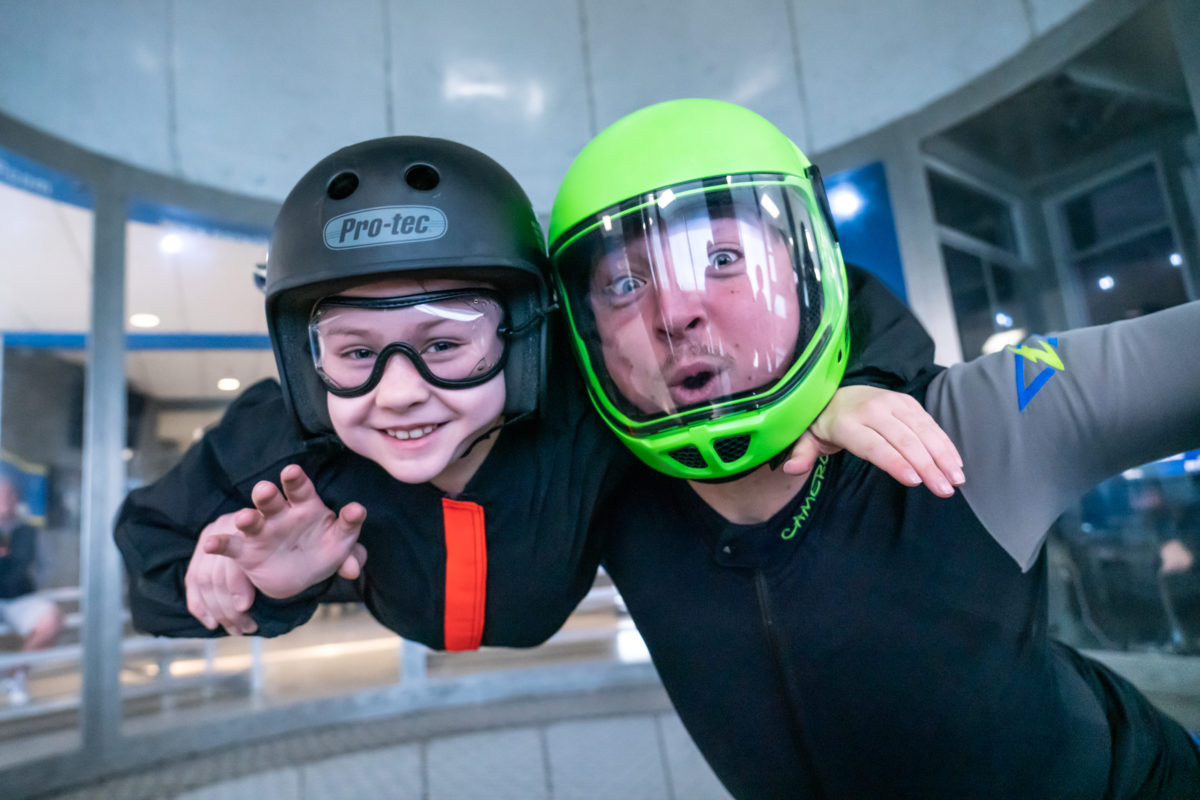
Is Indoor Skydiving Scary?
Friday, March 31, 2023
- Team XP
- 3/31/23
- 0
- Indoor Skydiving
Is skydiving scary? Well, that depends on who you ask. It’s fair to say that most people would enthusiastically say, “Yes!” But just how scary is skydiving is a bit of a different, and also subjective, question. We all have a different appetite for things that get our blood pumping, but one thing’s for sure: skydiving is the kind of scary that helps you live a better, happier, more extraordinary life. You can’t say that about every scary thing!!
If you’re one of those people who doesn’t feel like skydiving is one of the scary things you can overcome, listen to your gut! It’s normal to feel scared when skydiving, but skydiving scared – like really terrified – is not fun. Here’s where indoor skydiving can make your flying dreams come true without getting sky high.
Is indoor skydiving scary? Well, indoor skydiving involves a lot less risk for obvious reasons, but that doesn’t mean floating around inside of a wind tunnel can’t also be anxiety-inducing. Let’s frame out the ways that flying indoors can amp up your adrenaline in a good way; how indoor skydiving is not scary; and how you can mentally prepare for skydiving inside the windytube.

It’s All Relative
Just like regular skydiving, indoor skydiving will be more or less freaky depending on the kind of stimulation you tend to experience in your everyday life.
If you’re a keyboard-to-couch kinda person, the environment will likely be super stimulating. In this case, we’d suggest arriving an hour early for your reservation and chilling in the observation area to watch other people fly. Knowing what to expect and seeing the joy in the faces of those you see flying, especially when they relax and get into it, is a great way to calm your nerves. That will soon be you!
If you’re an adventure-sports person, you’ll probably expect to be able to apply the tools you’ve picked up in your other pursuits to this task. And maybe you can but, real talk, the wind tunnel environment is likely very different from anything you’ve experienced before. Your bendiness from yoga … rapid corrections from motorsports … muscling-through from strength training … that stuff doesn’t really work well here.
Simply said: no matter your background, enter the tunnel with a beginner’s mind. Listen to your instructor and you’ll be just fine.
Acceptance is Hard
Humans have trouble trying new things. It’s in our genes! Resisting new situations, especially potentially scary ones, is part of why your bloodline has survived to the point where you’re standing in front of a loud tube of air!
The key here is acceptance. Accept that you’re trying something new, and there’s going to be a learning curve. Accept that you’ll feel awkward at first. Accept that you’ll need the help of your professional instructor to feel supported and safe (that’s what they’re there for).
Learning to fly is like learning to swim or drive for the first time. You’re not a pro at either of those things when you start but you push through, increasing your competence and confidence as you go.
Let go of any expectations you have and trust that your instructor has your back. We daresay it’ll make you feel … weightless.

The Risks are Minor
The wind tunnel is gentler than you might think. There’s no big leap required (or advised) to get in there. There’s no heavy gear to wear. Sure, it’s not a totally risk-free, harmless environment, but there’s little potential for injury. You might gain some bumps and scrapes, if anything (and that’ll just make you look cool to your friends).
Your instructor will be hands-on through the whole experience to make sure you stay stable and safe in the airflow. Whatever you throw at them in the moment, they’ve seen it before.
One thing people tend to worry about with the indoor and outdoor versions of our sport is whether it is hard to breathe when skydiving. The increased airflow over your face can make it seem like you can’t breathe – but you absolutely can. Chances are you’re even holding your breath! We humans tend to do that when entering into a new experience. If you feel like you can’t breathe, just exhale. Breathing out will reset your breath cycle and kick your lungs into gear.
Another question that applies to both environments is: should I skydive if I’m afraid of heights? You certainly can go outdoor or indoor skydiving with a fear of heights, and plenty of people do. Skydiving can actually help you get over your fear of heights!
With both questions, it helps if you maintain a good body position (which you’ll learn from your instructor). Keeping your head up and your face forward allows the air to pass over your nose and mouth instead of hitting you square in the face, and will keep you from dwelling on the fact that your feet are off the ground.
What’s Next?
So, what is the scariest part about skydiving in the tunnel? The anticipation! Once your first flights (and all those first-flight nerves) are behind you, you can start sport flying. As you’ll discover for yourself, there’s nothing more satisfying than dropping into that freeing space that’s reserved just for flying with friends!
If you love the tunnel as much as we do (and we really think you will), talk to your instructor about becoming a regular flyer. There’s more to learn and experience than you can even imagine!
We can’t wait to share windy high-fives with you! Join us!

The entire staff is extraordinarily professional and gracious. They are extremely safety conscious while at the same time giving everyone as much freedom as they can safely manage. A rare combination. While we (adults) were there, our instructor also suited up and trained a 2-year-old boy and a three-year-old girl.
Jack Berry
Copyright © 2025, Paraclete XP Indoor Skydiving, All Rights Reserved.
DropZone Web Design & Marketing by Beyond Marketing, LLC